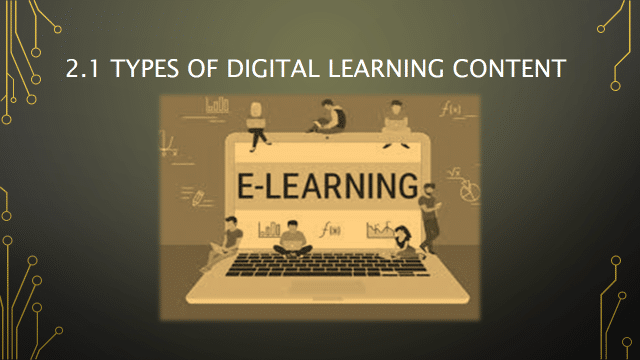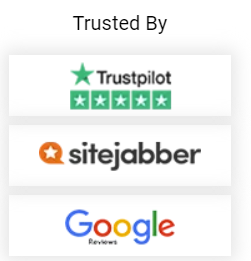
Digital learning is an educational technological advancement embraced widely by the education sector and gives students control over time, place, and pace. It encompasses the use of digital tools and a wide spectrum of content applications, some of which are detailed below.
Explainer Videos
Explainer videos are short films used in online learning platforms to help learners simply understand complex concepts while at the same time encouraging engagement (Enache , 2022). Most of these films are usually short ranging from 60-90 seconds depending on the complexity of the topic and are aimed at introducing concepts that are new to the students by providing a quick general overview. Good quality, versatility, and structure are some of the criteria that have to be met when making explainer videos (Enache , 2022). They can be presented in 2D, 3D, motion graphics, or whiteboard explainers. Explainer videos can be used simultaneously with other forms of digital learning like PDFs and E-learning to further boost levels of learner understanding.
Advantages
- Attracts learner engagement and stimulates curiosity by creating a fun learning environment.
- They encourage information retention as videos have been proven to be more memorable.
- Can be shared easily online among all learners.
Disadvantages
- Making an effective explainer video requires a lot of time and effort.
PDFs
Portable Document Formats are flexible file formats created by Adobe and allow an effective way of presenting and exchanging documents in a digital learning platform (Enache , 2022).
Advantages
- PDFs are universally compatible across all learning platforms.
- They enhance the better organisation of learning materials.
- They are secure and hence protect data.
Disadvantages
- PDFs are less engaging to learners and do not spike up any form of engagement.
- Learners have difficulties viewing a full page at a time hence requiring scrolling and zooming.
Infographics
These are representations of information or data in graphics or visuals like images, charts, and diagrams to enhance the delivery of information to learners (Tarkhova et al., 2022)
Advantages
- Communicates abstract information easily by breaking up heavy content.
- Visual formats capture learners’ attention and help them retain information for students.
Disadvantages
- Designing an infographic is time-consuming.
- Infographics may not be effective for all types of content.
- An infographic may limit the information intended to be presented.
E-learning
A digital, formal learning platform that incorporates the use of electronic devices such as computers and phones connected to the internet (Darejeh et al., 2022)
Advantages
- Online learning is convenient for everyone in terms of availability and comfort. For example, learners may choose to learn at weekends or evenings.
- Learners can access updated content unlimited number of time.
Disadvantages
- Online classes are solely dependent on electronic devices which are prone to technical issues.
- The sense of isolation in online classes may be a burden to learners who find comfort in their professors and fellow students.
Scenario-based learning
A scenario-based approach puts learners in real-life scenarios such as case-based scenarios hence equipping them with the practical skills required in a professional environment (Enache , 2022).
Advantages
- Scenarios create interest in learners thereby enhancing interactiveness and experimental learning.
- Scenarios enhance a better understanding of technical knowledge.
- Scenarios sharpen learners’ critical thinking and decision-making skills.
Disadvantages
- Scenarios are never accurate since it is impossible to predict the future.
- These digital learning contents can be used simultaneously since they all aim at enhancing learners’ understanding and engagement. They are effective in boosting learners’ interest to grasp abstract content.
Synchronous and Asynchronous learning
Synchronous learning
This involves learning that is set in real time with both the student and the instructor present it could be in a physical or virtual space. In virtual class is set at a given time and learners have to log in to the lesson as scheduled in the presence of an instructor (Amiti, 2020). It can take place in form of a live video through an instructor-led discussion or through group works where the instructors assign case studies and learners are given time to negotiate answers. Synchronous learning requires commitment and dedication since the set session cannot be rescheduled. Just like normal learning, readings, and assignments are given outside class time and must be submitted as per the stipulated time (Amiti, 2020). PDFs are great resources in synchronous learning where the instructor can share the module content with the learners. E-learning is the best form of synchronous learning since it involves formalised teaching. It could be in the form of live webinars, virtual classrooms, and video conferencing. Info graphics can also be presented by the instructor in this case to assist in learning.
Asynchronous learning
Learning through this method allows students to learn on their schedule on the condition that a given content must be completed within a specific time frame, for instance, a week. It allows flexibility in that individuals do not have to be online at the time with their instructor and other classmates (Amiti, 2020). Unlike synchronous learning, live videos with lecture components are not used here. Explainer videos are best utilized in this case as learners get access to short videos and learning materials with intended concepts available on the platform. These learning materials can be accessed as many times as possible. Group work is scheduled only when it is convenient for everyone. Assignments are completed and the students get immediate feedback. PDFs are still useful resources in this case and they are posted and downloadable from these platforms and can be used to present content intended to be consumed by the learner as well as assignments. For instance during my CIPD course most learning resources including the assignments hints and tips and the assessment briefs were in form of pdfs that could be accessed by learners. However, learners must ensure that they still have contact with their instructor and classmates constructively (Amiti, 2020). Scenario-based learning is another good example of asynchronous learning resource this can be a simulation game where a learner will enter a virtual world and perform tasks or make decisions as he/she would in real life. For instance a management simulation game where one is required to play making managerial decisions.





